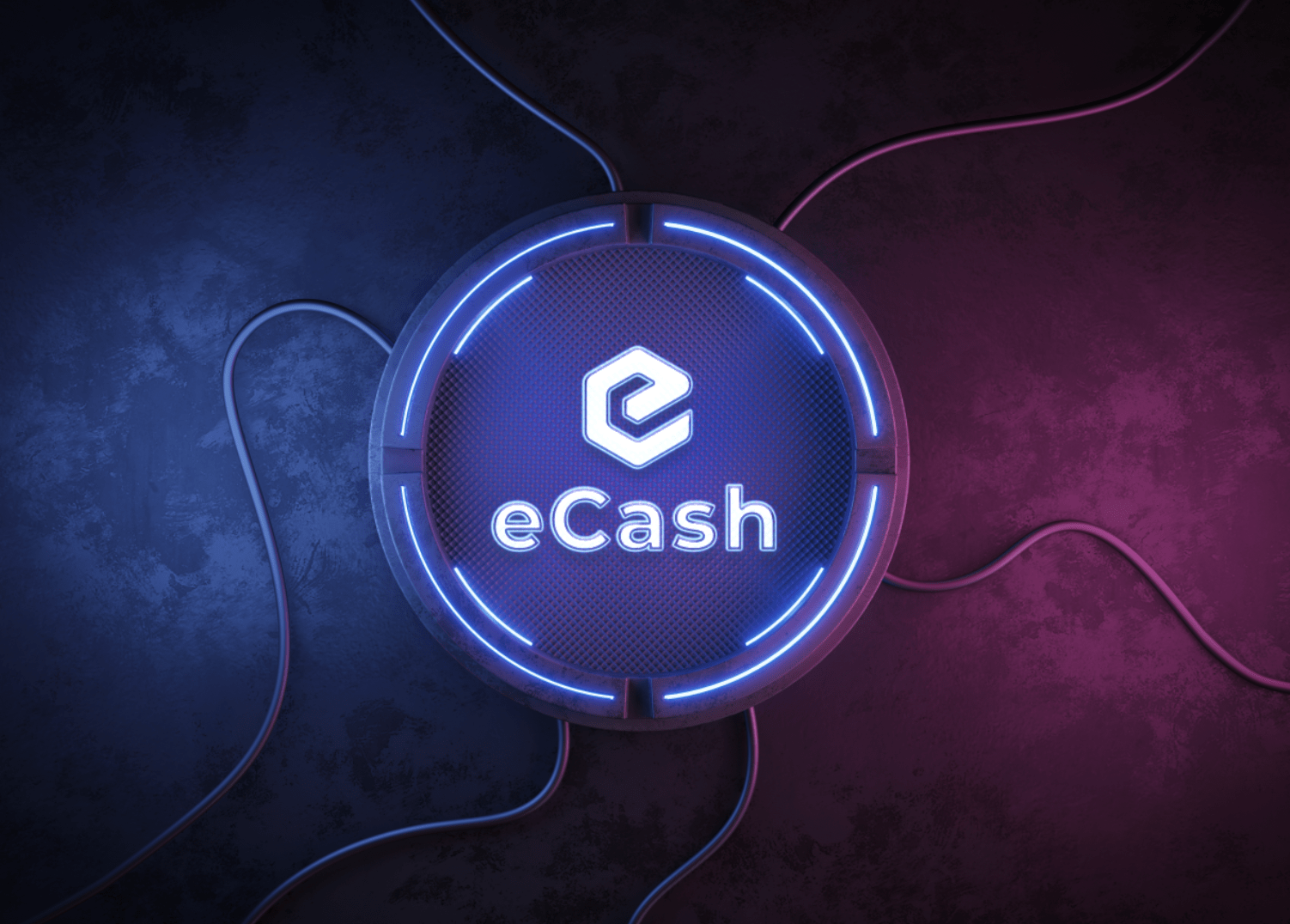
In the rapidly evolving landscape of Ethereum scaling solutions, fragmentation has become a critical challenge that threatens the ecosystem’s potential for mass adoption.
This guide explores Caldera, a revolutionary infrastructure platform. Caldera introduces the Metalayer – a unifying solution for Ethereum rollups. Readers will discover how Caldera’s native ERA token powers this groundbreaking system, understand its tokenomics and real-world applications, and learn how this technology aims to transform the future of blockchain interoperability and scalability.
Key Takeaways
- Caldera Crypto has evolved from a Rollup-as-a-Service platform to the creator of Ethereum’s first Metalayer, solving the critical rollup fragmentation problem
- ERA token powers the entire ecosystem as an omnichain gas token, enabling cross-chain transactions, governance participation, and network security through staking
- The Metalayer unifies all major rollup frameworks including Optimism, Arbitrum, ZKsync, and Polygon, creating unprecedented interoperability without compromising individual characteristics
- Proven market traction with over 60 live rollups, $550 million in TVL, 80+ million transactions, and 1.8 million unique wallets across notable chains like Manta Pacific and ApeChain
- Transparent tokenomics structure allocates 35.94% to Foundation, 32.075% to Investors, 14.75% to Core Team, 10.235% to R&D, and 7% to community airdrops
- Unique competitive advantages include framework-agnostic design, one-click rollup deployment, and native cross-chain architecture that competitors lack
- Real-world applications span DeFi protocols, gaming and metaverse, enterprise integration, and multi-rollup application development
- MEXC offers the premier trading experience for ERA tokens with competitive fees, robust security, and seamless DeFi ecosystem integration
Table of Contents
What is Caldera Crypto (ERA Token)?
Caldera started as a leading rollup platform. Now, it has evolved into something more ambitious: the creator of Ethereum’s first Metalayer. Originally launched in 2023 as a Rollup-as-a-Service (RaaS) platform, Caldera enables projects to deploy customized rollups with a single click across multiple frameworks including Optimism, Arbitrum, ZKsync, and Polygon stacks.
The platform has rapidly grown to become one of the fastest-growing rollup ecosystems globally. It empowers web3 teams to customize and launch over 60 high-performance rollups. Today, the Caldera ecosystem comprises 1.8 million unique wallets holding over $550 million in Total Value Locked (TVL), with more than 80 million completed transactions. Notable chains in the ecosystem include Manta Pacific, inEVM by Injective, ApeChain, Treasure, Plume Network, Towns, Kinto, RARI Chain, and Zero Network by Zerion.
ERA is Caldera’s native token. It serves as the backbone of the Metalayer protocol, powering both utility functions and governance decisions. The ecosystem is transitioning from a simple RaaS platform to a comprehensive rollup abstraction layer. ERA token holders gain several key powers: participate in governance, stake for network security, and facilitate cross-chain operations.
Caldera vs ERA Token: Key Differences
| Aspect | Caldera | ERA Token |
|---|---|---|
| Definition | The complete platform and ecosystem | Native utility and governance token |
| Function | Rollup deployment platform and Metalayer protocol | Powers transactions, staking, and governance |
| Scope | Infrastructure for 60+ rollups across multiple frameworks | Digital asset for network participation |
| Role | Enables rollup creation, customization, and unification | Facilitates cross-chain operations and protocol governance |
| Comparison | Similar to Ethereum (the platform) | Similar to ETH (the native token) |
| User Interaction | Developers build on Caldera’s infrastructure | Users hold and stake ERA tokens |
What Problems Does Caldera Crypto Solve?
1. The Fragmentation Crisis in Ethereum Scaling
Ethereum adopted a rollup-centric roadmap, leading to unprecedented growth. Since 2020, over $38.5 billion in value has moved to Layer 2s and Layer 3s. However, this success has created a new challenge: rollup fragmentation that threatens the ecosystem’s long-term viability.
2. Isolated Rollup Ecosystems
Here’s the problem: current rollups operate like isolated “city-states.” They face three critical limitations:
- Isolated from Each Other: Rollups only achieve native interoperability through the expensive and slow Ethereum Layer 1. Cross-rollup interactions require costly and time-consuming processes that limit user experience and developer capabilities.
- Isolated from Infrastructure: Building infrastructure solutions like bridges or oracles requires maintaining separate deployments for each rollup, treating every chain as an independent island rather than part of a unified ecosystem.
- Isolated from Users: Traditional rollup architectures prevent meaningful user participation in network operations or validation, limiting community engagement and decentralization.
3. The Historical Parallel
Caldera draws inspiration from the early internet’s evolution, where disparate networks and protocols initially struggled with connectivity issues. Just as standardized protocols like TCP/IP enabled the internet’s explosive growth by providing a common communication language, Caldera’s Metalayer aims to create unified networking protocols for Ethereum rollups.

The Story Behind Caldera Crypto Project
Caldera was founded with the core insight that simply creating a single faster blockchain wasn’t the optimal solution for scaling Ethereum. Instead, the founders envisioned enabling Ethereum to reach true web-scale through horizontal scaling via rollups.
The platform launched in 2023 with a revolutionary approach: allowing projects to deploy customized rollups with a single click, without requiring an engineering team. Caldera handled deployment, customization, ongoing maintenance, and security, enabling projects to focus entirely on building their vision rather than managing infrastructure complexity.
This vision quickly proved successful, as Caldera became one of the fastest-growing rollup ecosystems worldwide. The platform’s flexibility in supporting multiple rollup frameworks – including Optimism, Arbitrum, ZKsync, and Polygon stacks – attracted diverse projects seeking customizable scaling solutions.
As the ecosystem matured and rollup fragmentation became increasingly apparent, Caldera evolved beyond its original RaaS model. The team recognized that while rollups were successfully scaling Ethereum, they needed a unifying layer to prevent the ecosystem from fragmenting into isolated protocols. This realization led to the development of the Metalayer concept and the introduction of the ERA token as the native utility token powering this unified infrastructure.

Key Features and Advantages of Caldera Crypto (ERA Token)
1. The Metalayer: A Unifying Infrastructure
The Caldera Metalayer represents a paradigm shift in rollup architecture. It functions as a unifying layer for all Ethereum rollups. This system enables seamless coordination, communication, and resource sharing. Most importantly, it preserves each rollup’s individual characteristics.
2. Core Technical Capabilities
- Message Passing and Relaying: The Metalayer enables efficient communication between rollups. Here’s how it works: a decentralized validator network relays messages from source chains to destination chains. This system uses an M-of-N signing threshold (where N is greater than 2). This means no single party can unilaterally censor or relay messages.
- Fast Finality and Preconfirmations: The system enhances transaction speed and security by delivering web2-like user experiences through advanced finality mechanisms that reduce settlement times across participating rollups.
- Guardian Nodes: These provide additional security layers and enable community participation in rollup operations, allowing web3 teams to enshrine Ethereum’s decentralization values at the network level.
3. Advanced State Management
The Metalayer validators post aggregate hashes of state roots from all participating chains, enabling users on any chain to submit Merkle proofs of state from other chains. This creates unprecedented cross-chain state accessibility while maintaining security guarantees.
4. Native Yield Distribution
The system delivers building blocks for seeding ecosystem-native economies where value accrued is distributed among the most passionate and dedicated stakeholders, creating sustainable economic incentives for long-term participation.
5. Developer-Friendly Platform
The Metalayer elevates the developer experience on Ethereum by providing tools that enable high-performance, user-friendly applications while leveraging the strengths of different rollups and mitigating their individual limitations.

Caldera Crypto Real-World Use Cases
1. Multi-Rollup Application Development
Developers can now build sophisticated applications that operate across multiple rollups simultaneously. This approach leverages the unique advantages of different frameworks. The result? Seamless user experiences across the entire ecosystem. This enables previously impossible use cases like applications that utilize Optimistic rollups for fast transactions while leveraging ZK rollups for privacy-sensitive operations.
2. Cross-Chain DeFi Protocols
Financial applications can access liquidity and execute operations across the entire Ethereum rollup ecosystem rather than being confined to single chains. This dramatically improves capital efficiency and enables more sophisticated financial products that can optimize for different rollup characteristics.
3. Infrastructure Provider Solutions
Web3 infrastructure providers can deploy services once and serve the entire Ethereum rollup ecosystem through the Metalayer, rather than maintaining separate deployments for each individual rollup. This reduces operational complexity and enables more comprehensive service offerings.
4. Enterprise Integration Solutions
Businesses can deploy rollups that immediately benefit from the connectivity and shared security of the broader ecosystem, making enterprise adoption more attractive by eliminating the isolation typically associated with private blockchain deployments.
5. Gaming and Metaverse Applications
Gaming protocols can leverage the Metalayer to create experiences that span multiple rollups, enabling complex game mechanics that utilize different chains for different purposes – such as using one rollup for high-frequency game actions and another for valuable asset storage.
ERA Tokenomics and Distribution
Here’s how ERA tokens are distributed. The structure supports long-term ecosystem growth while ensuring balanced participation across all stakeholder groups:

- Airdrops: 7.0% – Distributed to top Caldera community members, Caldera chain users, and participants on leading Layer 2 networks to reward early adoption and ecosystem engagement.
- Foundation (Community and Foundation Treasury): 35.94% – Allocated directly to the Caldera Foundation for protocol stewardship and ecosystem development. A significant portion will be delegated to community control through DAO governance mechanisms.
- R&D: 10.235% – Reserved for core developers to fund future research, development, and ecosystem initiatives including protocol maintenance, team expansion, and programs supporting rollup developers, infrastructure providers, and node operators.
- Core Team: 14.75% – Allocated to members of Constellation Labs, the first core contributor to Caldera, ensuring long-term alignment with project success.
- Investors: 32.075% – Distributed to early investors of Constellation Labs across four funding rounds (pre-seed, seed, strategic, and Series A), providing the capital foundation for platform development.
The unlock schedule follows a structured approach designed to prevent market disruption while ensuring sustainable token distribution. Specific vesting periods and cliff schedules apply to different allocations, with the airdrop portion being immediately available to support community engagement and adoption.
ERA Crypto Functions and Utility
1. Omnichain Gas Token
ERA serves as the standard gas token for all operations on the Metalayer. Think of it as the fuel that powers cross-chain transactions. Transactions that initiate cross-chain interactions and data propagations across chains incur fees denominated in ERA, creating consistent economic incentives across the entire rollup ecosystem.
2. Staking and Network Security
Want to participate in the Metalayer? Nodes must stake ERA tokens to join the network. A proof-of-stake or restaking consensus mechanism operates on these staked tokens, with node participation levels directly proportional to the amount of ERA staked or delegated to that node.
3. Subnet Participation
Utility-specific subnetworks can be created alongside the Metalayer to provide specialized functions to rollups. For example, subnets might generate and propagate zero-knowledge proofs on-chain for rollups requiring them. These networks also utilize ERA tokens for proof-of-stake consensus.
4. Governance and Protocol Evolution
ERA token holders participate in comprehensive on-chain governance of the Caldera Metalayer protocol and related ecosystem decisions:
- Protocol Upgrades: All modifications to the Caldera Metalayer protocol require on-chain votes from the Caldera DAO, ensuring community-driven development.
- Caldera Improvement Proposals (CIPs): Token holders can create and vote on proposals covering treasury use, grants, brand and intellectual property decisions, and other strategic initiatives.
- Foundation Governance: ERA holders influence the selection of Caldera Foundation directors and special council members who administer DAO proposals and make discretionary foundation decisions.
- Security Council Elections: Token holders elect technical experts to oversee mission-critical protocol upgrades and provide optional security services to rollups launched within the Metalayer.

The Future of Caldera
Caldera’s roadmap focuses on establishing the Metalayer as the definitive infrastructure for Ethereum’s rollup ecosystem. The platform aims to evolve from connecting existing rollups to becoming the foundation that enables the next generation of blockchain applications.
The development priorities include expanding subnet functionality to support specialized use cases, enhancing cross-rollup communication protocols, and implementing more sophisticated governance mechanisms that truly decentralize control to the community. As the rollup ecosystem continues growing, Caldera’s Metalayer will scale to accommodate hundreds of chains while maintaining seamless interoperability.
Long-term vision encompasses creating a self-sustaining ecosystem where rollups can innovate independently while benefiting from shared security, liquidity, and infrastructure. This approach positions Caldera to become the backbone of Ethereum’s scaling solution, similar to how TCP/IP became the foundation of internet communication.
The platform’s success will ultimately be measured by its ability to eliminate rollup fragmentation while preserving the innovation and customization that makes rollups attractive to developers and projects seeking tailored blockchain solutions.
Caldera Crypto Competitors: ERA Token vs Other Projects
Understanding Caldera’s Competitive Landscape
Caldera operates in the rapidly evolving Layer 2 infrastructure space. Several projects compete here, each trying to solve Ethereum’s scaling challenges through different approaches.
Primary Competitors include established Layer 2 solutions like Polygon (MATIC), which offers a multi-chain ecosystem; Arbitrum (ARB), focusing on Optimistic rollup technology; and Optimism (OP), pioneering optimistic rollup implementations. These projects primarily offer individual scaling solutions rather than unified infrastructure.
Infrastructure Competitors encompass platforms like Cosmos with its Inter-Blockchain Communication (IBC) protocol and Polkadot’s parachain architecture, both attempting to solve blockchain interoperability through different technical approaches.
Caldera’s Unique Advantages
- Unified Rollup Abstraction: Unlike competitors that focus on individual rollup solutions, Caldera creates a unifying layer that connects all types of Ethereum rollups, regardless of their underlying technology stack.
- Framework Agnostic: While competitors typically lock users into specific rollup implementations, Caldera supports Optimism, Arbitrum, ZKsync, and Polygon stacks simultaneously, providing unprecedented flexibility.
- One-Click Deployment: Caldera’s RaaS platform eliminates the technical barriers that prevent many projects from deploying their own rollups, democratizing access to custom blockchain infrastructure.
- Cross-Chain Native Design: The Metalayer is built from the ground up for cross-rollup communication, rather than retrofitting interoperability solutions onto existing single-chain architectures.
- Proven Ecosystem: With over 60 live rollups, $550 million in TVL, and 80+ million transactions, Caldera has demonstrated real-world traction that many theoretical competitors lack.
The fundamental difference lies in Caldera’s vision: instead of competing with existing rollups, it unifies them into a more powerful collective ecosystem where each rollup maintains its unique advantages while gaining unprecedented interoperability.

Where to Buy ERA?
MEXC is the premier destination for acquiring ERA tokens. The platform offers comprehensive trading specifically optimized for emerging blockchain projects like Caldera. As a leading cryptocurrency exchange, MEXC provides the liquidity, security, and user experience necessary for both novice and experienced traders to participate in the Caldera ecosystem.
The platform’s commitment to supporting innovative projects in the Ethereum scaling space makes it the ideal venue for ERA token trading, with competitive fees, robust security measures, and seamless integration with the broader DeFi ecosystem.
How to Buy Caldera ERA?
- Step 1: Create your MEXC account by visiting the official website and completing the registration process.
- Step 2: Complete KYC verification to unlock full trading capabilities and ensure account security.
- Step 3: Deposit funds into your MEXC wallet using supported cryptocurrencies or fiat payment methods.
- Step 4: Navigate to the trading section and search for the ERA/USDT trading pair.
- Step 5: Choose between market order (immediate purchase) or limit order (set desired price).
- Step 6: Enter the amount of ERA tokens you wish to purchase and review transaction details.
- Step 7: Confirm your order and monitor the execution in your trading dashboard.
- Step 8: Transfer purchased ERA tokens to your secure wallet for long-term storage or keep them on MEXC for active trading.
Conclusion
Caldera represents a transformative approach to solving Ethereum’s rollup fragmentation challenge through its innovative Metalayer protocol. By creating a unified infrastructure that connects diverse rollup frameworks while preserving their individual strengths, Caldera addresses one of the most critical obstacles to blockchain mass adoption.
The ERA token serves as more than just a utility asset – it’s the foundation of a new economic model that aligns incentives across the entire Ethereum rollup ecosystem. With its comprehensive tokenomics, governance mechanisms, and proven track record supporting over 60 rollups, Caldera has positioned itself as essential infrastructure for the future of decentralized applications.
As the blockchain industry continues evolving toward a multi-chain future, Caldera’s vision of unified rollup infrastructure offers a compelling solution that maintains Ethereum’s security guarantees while enabling unprecedented scalability and interoperability.
Join MEXC and Get up to $10,000 Bonus!
Sign Up


